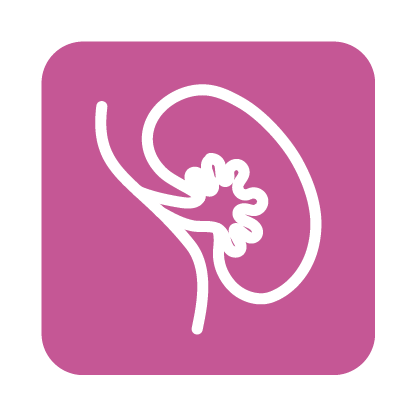Kidney
What you need to know before and after a kidney transplant
What is a kidney transplant?
A kidney transplant is a treatment option for many patients who have long-term kidney failure. This is also known as chronic or end-stage kidney failure.
During a kidney transplant, a kidney is removed from one person (the donor) and given to another person (the recipient). Kidneys can be donated from living donors or from those who have died (deceased donors).
This website aims to guide you round the kidney transplantation journey so you can gain a greater understanding of the process. It focuses on an average patient.
Your transplant team will be able to provide further information on what a transplant might mean for you.
Getting started
Get information on why you might need a kidney transplant and what tests are involved.
Benefits and risks
Learn about how a kidney transplant can help, possible complications and warning signs.
Waiting for a kidney
Find out about living and deceased donors, waiting times and the offering process.
At the transplant centre
Find out about getting admitted to hospital, transplant surgery and when you can go home.
Living with a transplant
Discover the best ways to stay mentally and physically healthy after a kidney transplant.
Care and support
Find out about support groups and getting help for depression or anxiety.
Kidneys are the most commonly transplanted organ

1960

2868

Useful links
External links
Links to charities specific to kidney donation and transplantation
Talk to your kidney doctor (nephrologist)
If you have any questions about kidney transplantation, please speak to your care team who will be able to offer guidance and advice.
NHS Blood and Transplant (NHSBT) and the British Transplantation Society (BTS) update these pages regularly to reflect current UK organ donation and transplantation policies and practice. However, this website is not designed to replace discussions with the transplant teams caring for you. Your transplant team know you and your medical condition best and can give you more detailed information to inform and support your decisions. NHSBT and the BTS do not accept any responsibility or liability for any loss or damage caused to any persons as a result of any reliance placed upon, or decisions made as a result of, information given on this website.



